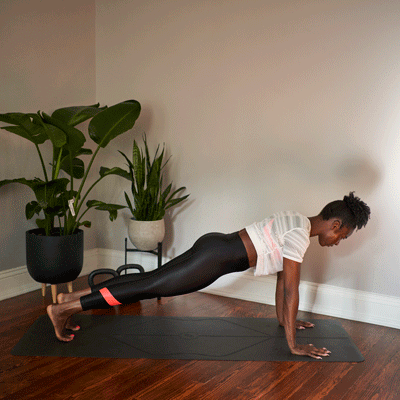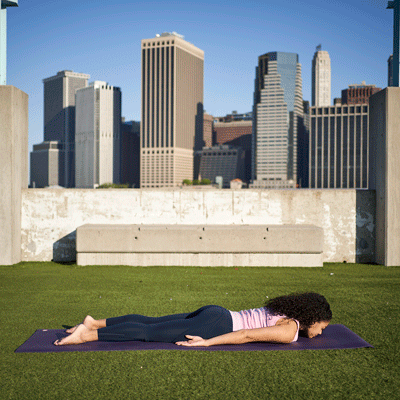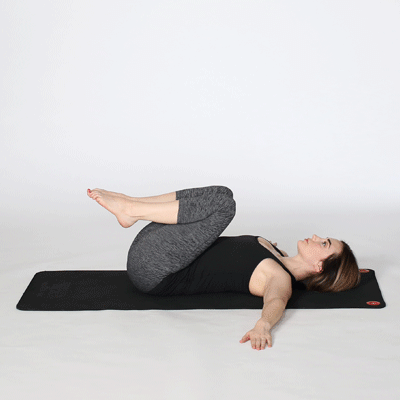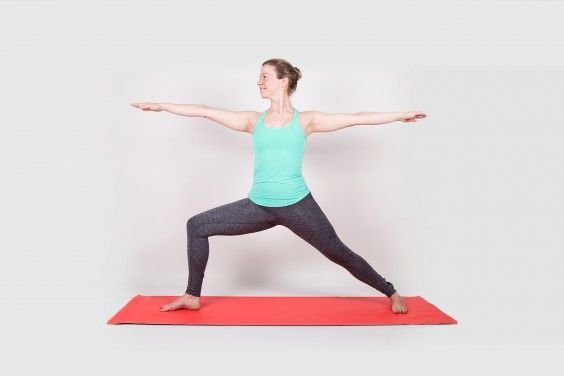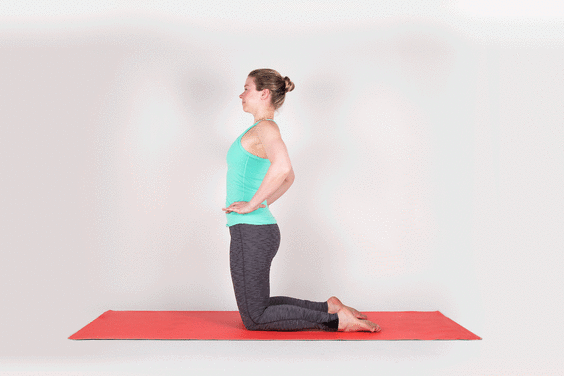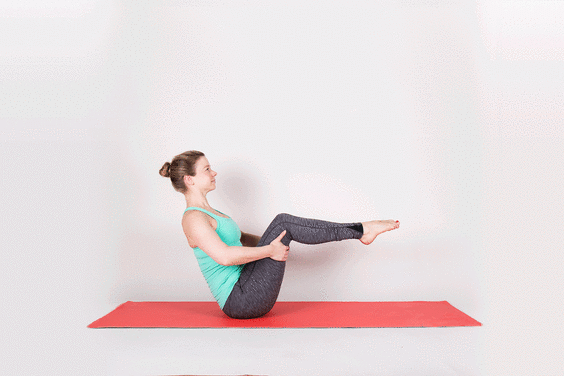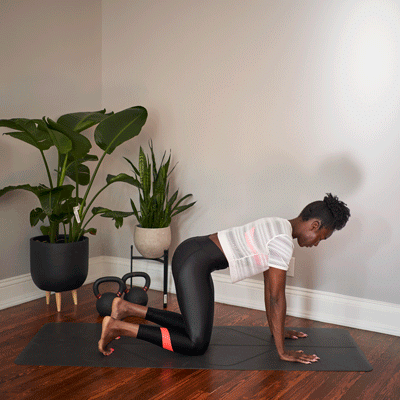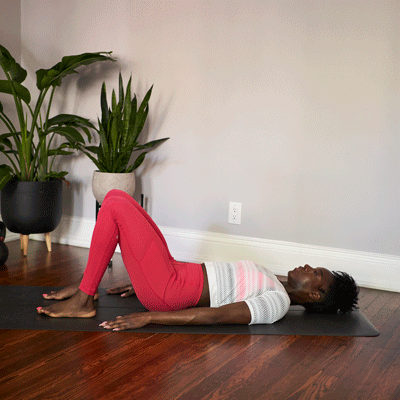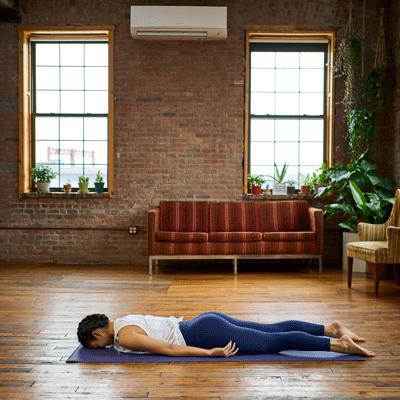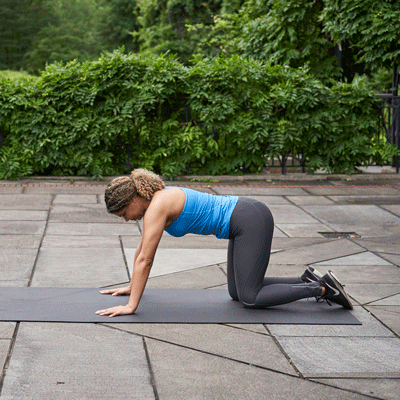Yoga’s not just for yogis — it’s also pretty legit for athletes. Pros like LeBron James, Aaron Rodgers, and Evelyn Stevens reportedly practice yoga. And if year-round fitness is part of their livelihood, they aren’t doing it for no reason.
How yoga helps athletes
- enhances overall performance
- improves balance
- boosts flexibility
- supports healthy recovery
- relieves stress
- aids in relaxation
- improves sleep
- soothes muscles
- prevents injury
10 good yoga stretches for athletes
If you can splash three-pointers like Steph Curry but have no idea what to do once you hit the yoga mat, don’t worry. We got you covered.
From the yoga mat to the court or field, the following stretches just might enhance your athletic performance.
Moves for training
1. Downward Dog
- Start on all fours and walk your hands 6 inches in front of you.
- Tuck your toes, lift your hips up and back, and stretch your spine. (Pro tip: Tight hams? Bend your knees a little to shift the weight to your legs.)
- Spread your fingers wide and press your weight into your hands.
Great for: Basketball players, football players, tennis players, gymnasts, runners
2. Cobra Pose
- Lie on your stomach, bend your arms, and place your hands right under your shoulders.
- Tightly squeeze your elbows close to your stomach.
- Lift your head, then chest, then shoulders off the floor. Keep your hands anchored.
- Straighten your arms. Keep your hips glued to the floor. Flex your thighs, abs, and lower back.
- Slowly lower back to the starting position.
Great for: Football players, basketball players, volleyball players, gymnasts
3. Supine Twist
- Lie on your back with knees bent and feet flat. Extend your arms straight out to the sides to form a T.
- Bring your knees to one side of your body and hold for a couple of breaths.
- Repeat on the other side.
Modification: You can also do this with your hands behind your head, in a V, or at 90 degrees — whatever’s most comfy. You can also place bolsters or folded blankets at your sides to stretch without any strain.
Great for: Tennis players, golfers, baseball players
Moves for performance
4. Warrior II
- Stand with your feet 3–4 feet apart. Shift right heel out so your toes point slightly inward and left foot out 90 degrees. Left heel should align with right arch.
- Bend your left knee to 90 degrees. Keep it in line with your second toe to protect your knee. Stretch through your back leg.
- Bring arms into a T. Draw your shoulder blades down and back. Spread your fingers, keeping palms facing inward.
- Sink deeper and look over your front fingers.
Great for: Basketball players, football players, runners, gymnasts
5. Camel Pose
- Start on your knees with legs hip-width apart and hands on your hips.
- Squeeze thighs together to rotate them inward. Slowly pull your tailbone toward your knees. Lift your sternum and draw elbows toward each other.
- Squeeze your abs and drop your hands to your heels.
- Grab heels with hands to lift and open your chest and lengthen your spine.
- Slowly bring chin back toward chest and hands to hips. Use your hands to support your spine as you come up.
Great for: Swimmers, cyclists, golfers, tennis players, baseball players
6. Boat Pose
- Sit with knees bent and hands underneath them. Shift backward onto your sit bones. Draw your lower back up and in.
- Hug your abs toward your spine.
- Lift shins until they’re parallel with the floor.
- Stretch arms forward, straighten your legs, and hold.
Great for: Gymnasts, volleyball players, cyclists, golfers, rowers, swimmers, kayakers, soccer players
Moves for recovery and injury prevention
7. Cat-Cow
- Start on your hands and knees with spine neutral.
- Lift your butt, press chest forward, and let stomach sink. Mooove over, Cat Pose — now you’re in Cow.
- Exhale into Cat Pose by rounding your spine and tucking your tailbone.
- Release your head toward the floor. Relax your neck.
Great for: Tennis players, golfers, baseball players, swimmers, basketball players
8. Bridge Pose
- Lie faceup with knees bent and arms at your sides, palms down. Stack heels under your knees and keep feet parallel, hip-width apart.
- Activate your legs and glutes. Press the floor away with your feet. Lift hips off the floor toward the ceiling.
- Slowly lower your hips down the floor, vertebra by vertebra.
Pro tip: To keep your knees from shifting outward, place a block between your upper thighs and squeeze it like you mean it.
Great for: Basketball players, runners
9. Bow Pose
- Lie on your stomach with hands at your sides, palms facing up.
- Bend knees and bring your heels as close as you can to your booty.
- With knees hip-width apart, grab hold of your ankles. Point your toes.
- Lift heels away from your butt as you lift head, chest, and thighs from the floor. Slowly rotate your shoulders as you do. Only your core should be touching the mat at the apex of your lift.
- Draw tailbone in as you deepen the stretch.
- Slowly lower back down.
Great for: Tennis players, gymnasts, baseball players
10. Pigeon Pose
- Start on all fours and bring right knee to right wrist. Your right ankle should fall in front of your left hip.
- Slide left leg back, heel facing up.
- Lower your upper body so your torso is over your right knee and hold for several breaths.
Modification: Your hips should be level in this pose. If you feel a little off-balance, support your butt with a block or folded blanket.
Another mod: A Half Pigeon is also effective — instead of lowering your upper body, keep it perpendicular to the floor.
Great for: Basketball players, football players, runners
Some credit mandatory yoga instruction for getting the Seattle Seahawks to the Super Bowl a while back.
Who knows if it was all those Cobra and Locust Poses that helped them beat out the competition, but science does show that yoga provides a number of performance benefits for athletes, including:
Flexibility, balance, and coordination — oh my!
Lots of sports, from basketball to martial arts to wrestling, require excellent balance and flexibility.
Good news too: A small 2016 study measured yoga’s effectiveness on performance in 26 male college athletes. Those who did yoga twice a week saw “significant” improvements in their balance and flexibility compared with those who didn’t.
Master concentration ➡️ master the craft
It’s no secret that yoga can improve mindfulness, which basically is the art of living in the present moment. Focusing on your breath and body is a great way to be *fully present,* which may be just what athletes need to improve their focus.
In a 2017 review, researchers concluded that practicing mindfulness regularly — surprise! — led to improved performance in a number of athletes. Afterward, this mindfulness habit was shown to have positive effects on shooting and dart throwing.
So, while more research needs to be done before we can draw any major conclusions, yoga just might help with the heightened concentration necessary for precision sports. (Or at least help you beat everyone in darts at the bar.)
Temp regulation and blood flow
If you’re going to do yoga, why not make it steamy?
In a small 2018 study, researchers examined the effects of hot yoga as a heat stress technique alternative for 10 field hockey players.
They found that hot yoga improved cardiovascular performance and plasma volume percentage, which helps regulate temperature while you move.
Yoga’s not just for the pros
Pro athletes may have access to world-class training and health programs, but yoga doesn’t need to be extravagant or expensive. You can get the job done with a mat and a few YouTube vids. (Bless you, internet.)
As with any other physical activity, when doing yoga, it’s important to:
- Know your limits. Most athletes understand that pushing yourself too hard can do a lot more harm than good — and yoga is no exception. When you’re just starting out, there’s no need to contort yourself into a Scorpion Pose on the first try. Start with the basic poses and work your way up.
- Use proper form. Whether you’re scoring goals or getting into Mountain Pose, form is paramount. Take time to learn the proper way to do things, which will help you avoid injury and get the most out of every move. If you feel stuck, try a few beginner’s yoga classes or enlist a trainer for help.
- Make a plan. Making yoga a staple in your routine should help you see improvements in your performance, whether you’re going for increased flexibility, better balance, or a clearer mind. Find what works for you and stick to it and you’ll be #winning in no time.
Adding even a little yoga to your normal routine could result in big gains — whether that’s in your sports performance or your making-it-through-your-commute-without-screaming performance.
Here are some tips for fitting yoga into your weekly exercise regimen:
- Set aside the time. Consider setting aside 10 or 15 minutes before or after your regular workouts to dedicate to yoga. When you seamlessly integrate it with your existing sched, sticking to the habit will come much more easily. If you’re loving it, you can always build up to longer sessions.
- Make it enjoyable. Make yoga a time to relax, explore, have fun, challenge yourself, or restore — whatever gets you going. When you look forward to doing it, you’ll get more out of it, and you’ll be less likely to skip it in favor of lounging on the couch. (But hey, who’s judging?)
- Do what works for you. Some people love doing yoga solo, while others prefer going to class and bringing a buddy along for that added layer of accountability. Find what works best for your fitness goals, budget, and schedule. There’s no one right way to add yoga to your routine. As with yoga itself, flexibility is key.
Yoga can provide a number of benefits for athletes, such as improved flexibility, balance, performance, coordination, and concentration. Doing hot yoga may also aid in cardiovascular health and temperature regulation.
Adding yoga to your exercise routine is highly personal, so take some time to experiment and find what works best for you. If you’re not sure where to start, consider taking a beginner’s yoga class or connecting with a fellow athlete who’s experienced in yoga.

